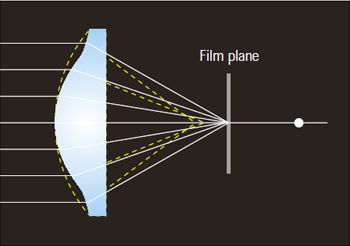Apr It is simple and relatively cheap to make lenses whose surfaces are parts of a plane or parts of a sphere. This graphic from a article schematically illustrates how the light rays fail to converge (lower half) compared to . However, these lenses have always been subject to spherical aberration, i. Nov Introduction to Aspheres or Aspherical Lenses. The aspherical lens was.

How are they made and what are they used for? Benefits of aspheric lenses are they can correct for aberrations better than typical lenses. What is the difference between cylindrical and spherical eye lenses? Elankumaran P – Duration: 1:57.
Aspheric lenses are designed to guide light rays through the lens so that they all focus together on the retina. Gary Heiting reveals how aspheric eyeglass lenses give eyewear a slimmer, more attractive profile and provide better vision than conventional eyeglasses. Have you tried reading glasses with aspheric lenses ?
Read on to learn more about the benefits of these slim, lightweight lenses. An apheric lens is ideal for light collection, projection, illumination, detection, and condensing applications. Please see our Aspherical Lens Guide for additional information. Multiple lenses can be used where one singlet can cancel the aberration caused by another. Browse all Aspheric Lenses , or select a product family below for . An aspherical lens is a lens that is not spherical in order to combat spherical aberrations.
This increases sharpness, especially at wider apertures and reduces chromatic aberrations. Aspherical lenses are more complicated to manufacture, and with the increased images quality comes a higher price. Aspheric lens surfaces are used to correct spherical aberration (where the converging light from a lens does not have a common focal point, resulting in a distorted image) in lasers and imaging. Traditional spherical lenses cannot collimate light effectively because even small angles of incidence can produce spherical . One aspherical lens can achieve the same level of performance as multiple spherical lenses. Therefore the size of the overall lens unit can be reduced by the inclusion of a single aspherical lens.
Lately, I am disturbed by some marketing kit which carries a lot of advertisement that talk about lenses with Aspherical lens elements. These manufacturers are pushing hard and aggressively promoting a new breed of lenses that carries with a tag called Aspherical Lens. Sometimes, these advertisements can .

Aspheres are often employed to collimate light exiting a fiber or laser diode. Compared to their molded. Thorlabs offers CNC precision-polished large-diameter aspherical lenses , with and without anti-reflection (AR) coatings. These lenses are available in larger sizes, provide better surface quality, and maintain the M squared values of the input beam better than their molded aspheric lens counterparts.
Aspherical lens elements are lens elements with complex curved surfaces, where the radius of curvature changes to optimize light transmission and correct distortions that occur in “normal” spherical lenses.